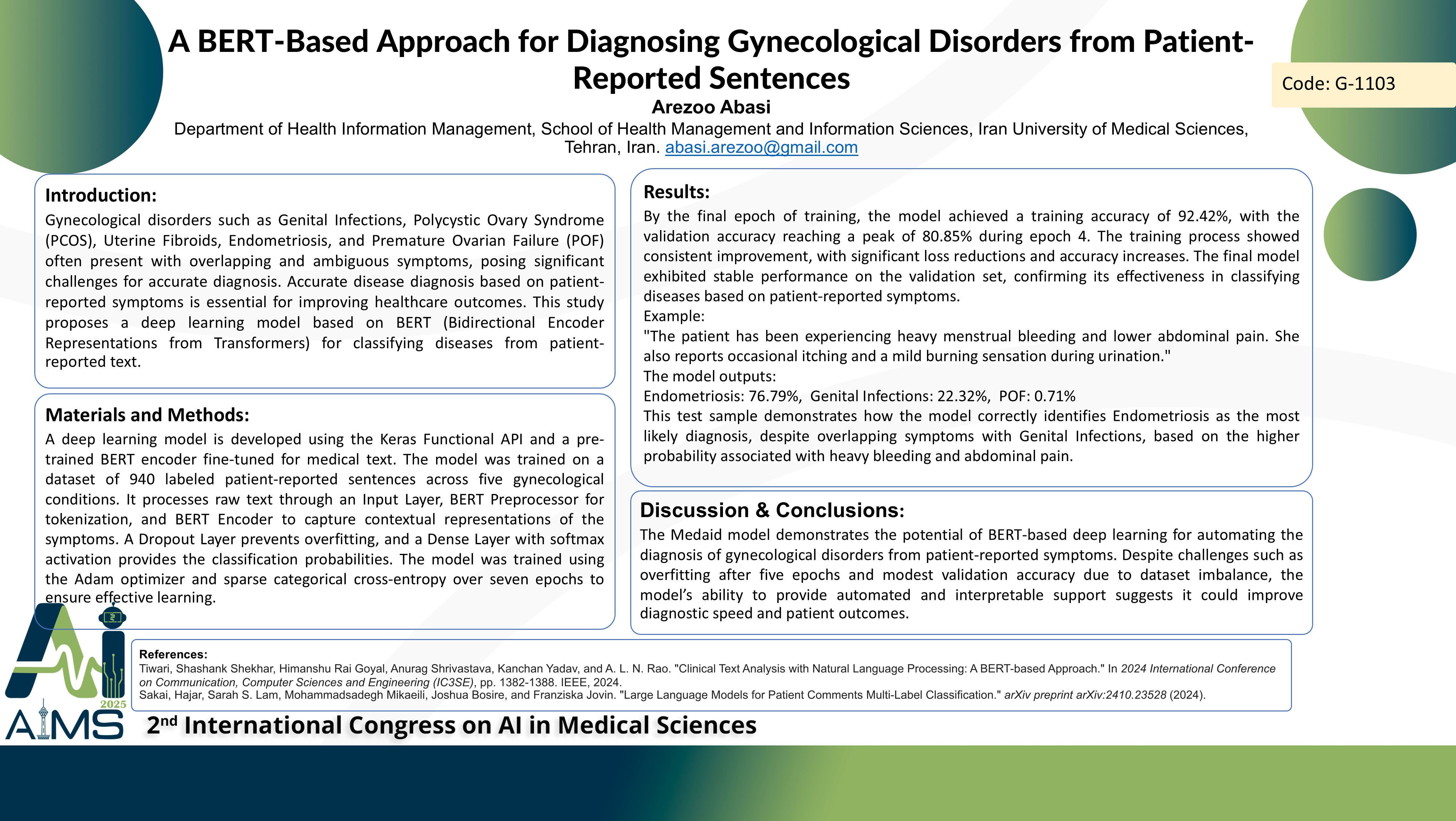A BERT-Based Approach for Diagnosing Gynecological Disorders from Patient-Reported Sentences
Code: G-1103
Authors: Arezoo Abasi * ℗
Schedule: Not Scheduled!
Tag: Intelligent Virtual Assistant
Download: Download Poster
Abstract:
Abstract
Background: Gynecological disorders such as Genital Infections, Polycystic Ovary Syndrome (PCOS), Uterine Fibroids, Endometriosis, and Premature Ovarian Failure (POF) often present with overlapping and ambiguous symptoms, posing significant challenges for accurate diagnosis. Accurate disease diagnosis based on patient-reported symptoms is essential for improving healthcare outcomes. This study proposes a deep learning model based on BERT (Bidirectional Encoder Representations from Transformers) for classifying diseases from patient-reported text. Methods: A deep learning model is developed using the Keras Functional API and a pre-trained BERT encoder fine-tuned for medical text. The model was trained on a dataset of 940 labeled patient-reported sentences across five gynecological conditions. It processes raw text through an Input Layer, BERT Preprocessor for tokenization, and BERT Encoder to capture contextual representations of the symptoms. A Dropout Layer prevents overfitting, and a Dense Layer with softmax activation provides the classification probabilities. The model was trained using the Adam optimizer and sparse categorical cross-entropy over seven epochs to ensure effective learning. Results: By the final epoch of training, the model achieved a training accuracy of 92.42%, with the validation accuracy reaching a peak of 80.85% during epoch 4. The training process showed consistent improvement, with significant loss reductions and accuracy increases. The final model exhibited stable performance on the validation set, confirming its effectiveness in classifying diseases based on patient-reported symptoms. Example: "The patient has been experiencing heavy menstrual bleeding and lower abdominal pain. She also reports occasional itching and a mild burning sensation during urination." The model outputs: Endometriosis: 76.79% Genital Infections: 22.32% POF: 0.71% This test sample demonstrates how the model correctly identifies Endometriosis as the most likely diagnosis, despite overlapping symptoms with Genital Infections, based on the higher probability associated with heavy bleeding and abdominal pain. Conclusion: The Medaid model demonstrates the potential of BERT-based deep learning for automating the diagnosis of gynecological disorders from patient-reported symptoms. Despite challenges such as overfitting after five epochs and modest validation accuracy due to dataset imbalance, the model’s ability to provide automated and interpretable support suggests it could improve diagnostic speed and patient outcomes.
Keywords
BERT Algorithm, Gynecological Disorders, Automated Diagnosis
